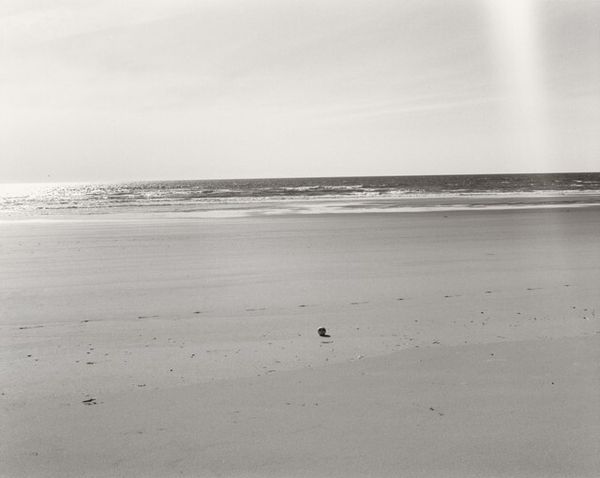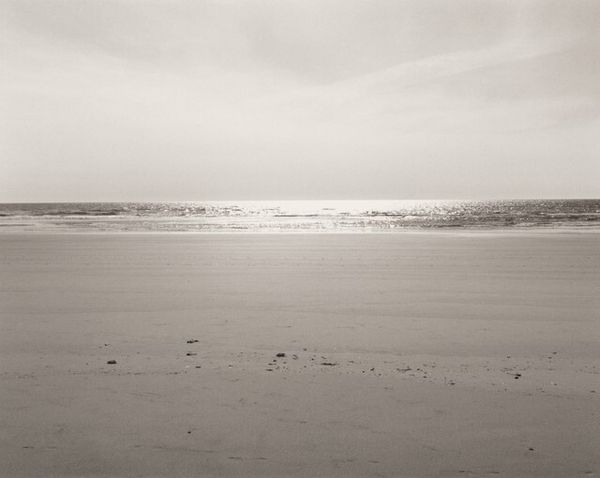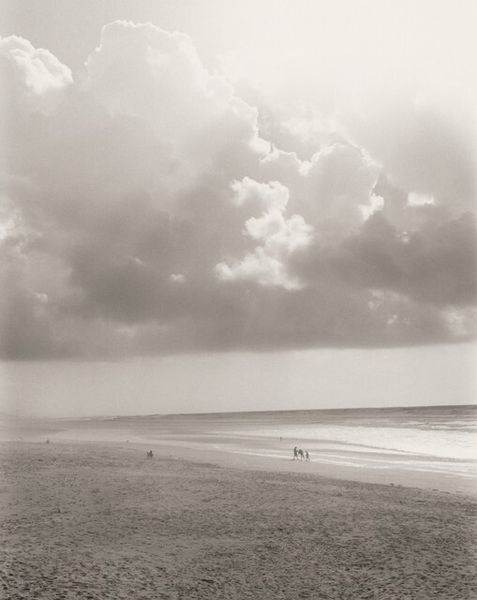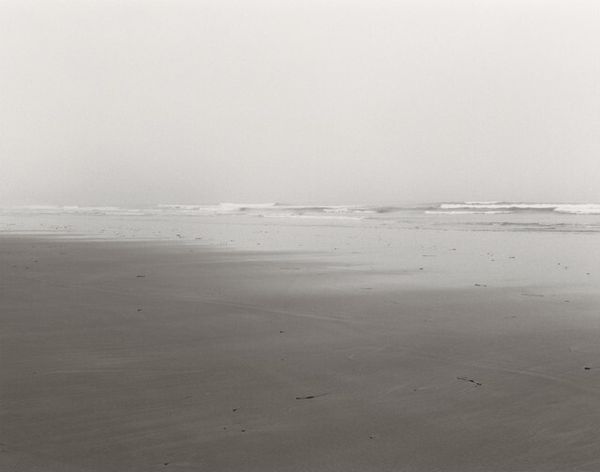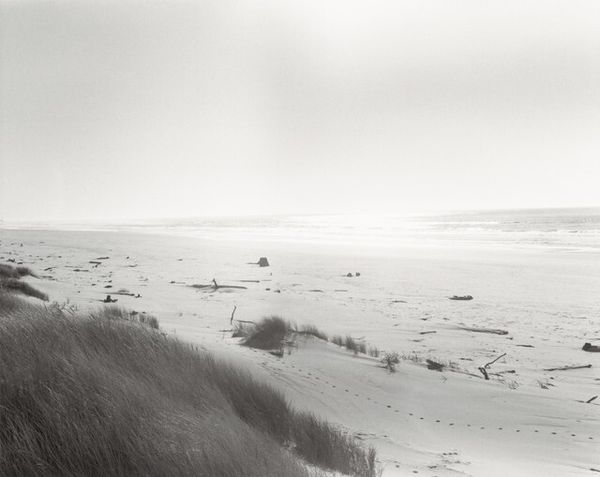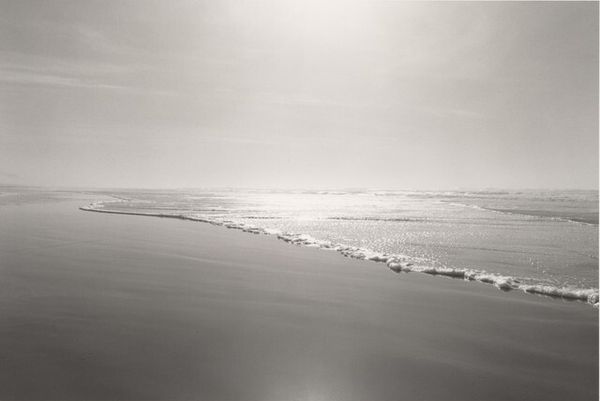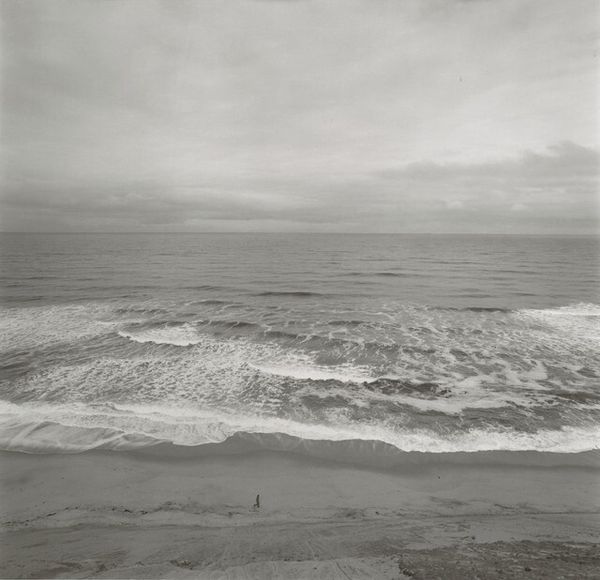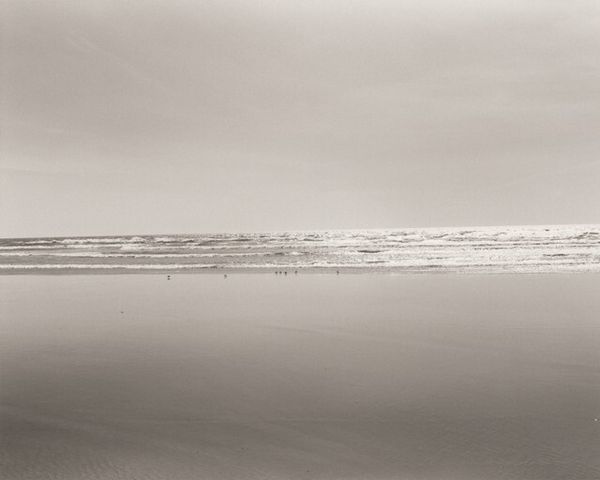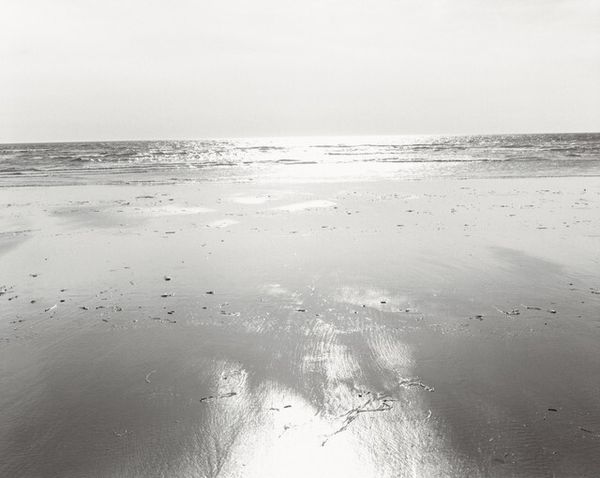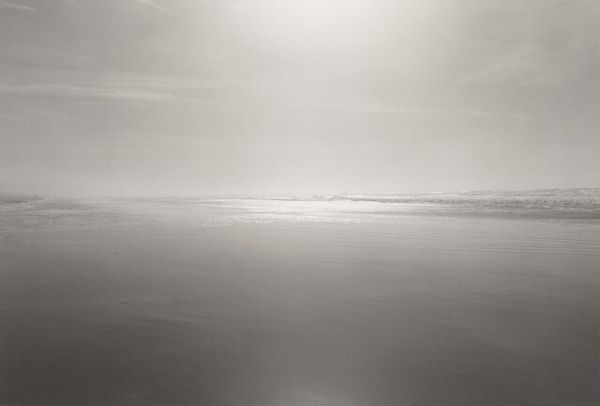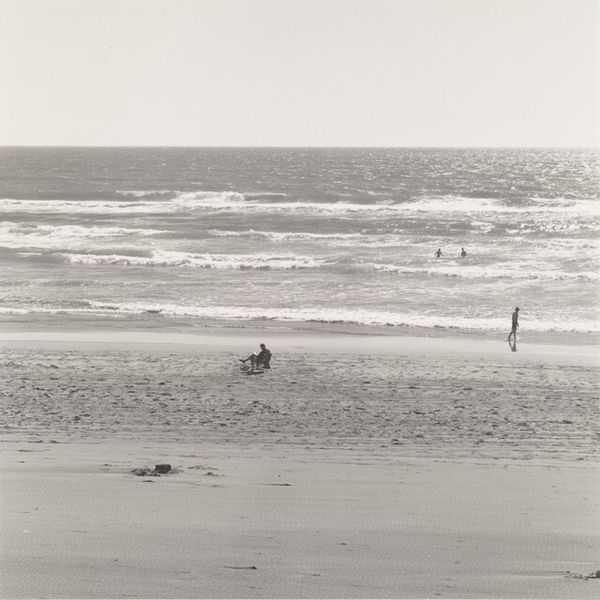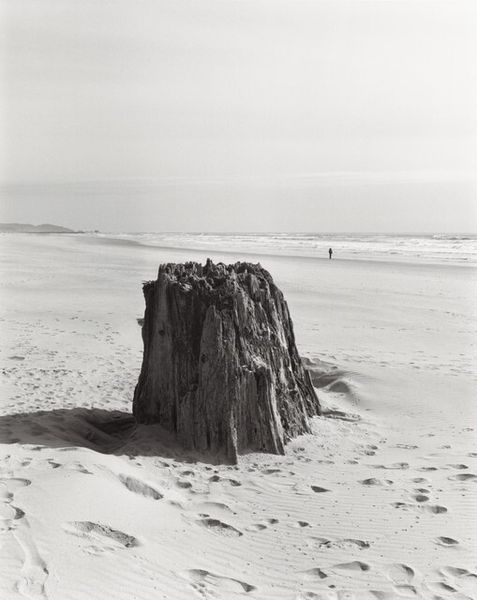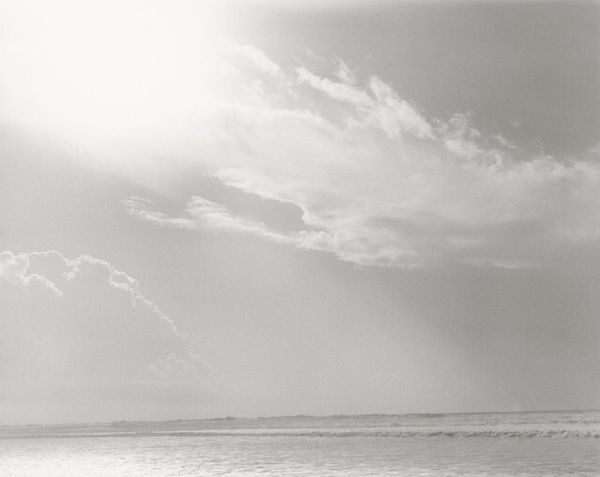
#
cloudy
#
black and white photography
#
snowscape
#
outdoor scenery
#
low atmospheric-weather contrast
#
sky photography
#
monochrome photography
#
monochrome
#
skyscape
#
shadow overcast
Dimensions: image: 28.26 × 22.54 cm (11 1/8 × 8 7/8 in.) sheet: 35.56 × 27.94 cm (14 × 11 in.)
Copyright: National Gallery of Art: CC0 1.0
Curator: Here we have Robert Adams’ "The Sea Beach," a gelatin silver print created in 2015. It captures a stark coastal scene. What’s your initial impression? Editor: Bleak, undeniably. There’s a loneliness that emanates from the monochrome palette and the sheer emptiness of the beach. I feel an echo of Romanticism but stripped of any grandeur. Curator: That echoes the historical context of Adams’ work. He’s known for photographing the changing American West, often focusing on the impact of human development on the landscape. The lack of color here, the somber tonality...it all serves to underscore that sense of loss and transformation. Notice the single object in the foreground, half-buried. Editor: Yes, that small, ambiguous form almost feels like a monument. Or maybe just forgotten debris, symbolic of the ephemeral nature of things. There's also a visual layering here – the immediate sandy foreground with the object, then tire tracks on the middle ground, and beyond them, the obscured line of the sea dissolving into the sky. Curator: Indeed, Adams often utilizes photographic compositions that play with depth and perspective, and uses symbolism this way. Consider how often the sea is depicted with the light it represents for so many artists. However, here, a heavy fog conceals the water from being its traditional optimistic symbolism, rather presenting an unseeable divide. Do you notice that? Editor: It really neutralizes the sense of the traditional horizon line, and flattens the picture as the world fades. And with those track marks we lose the idealization of landscape photography here as humans are actively interfering in this space. What cultural narratives is Adams responding to here? Curator: Consider the time. 2015... post-industrial anxieties, environmental concerns reaching a fever pitch. There's also a visual quietness and peace despite the industrial footprint on this scenery. Editor: In looking closer at the details, that could be a subtle act of protest about how we view natural environments. Ultimately it speaks to both the endurance and fragility inherent within the natural world. Curator: Perhaps a space of acceptance, a moment of respite from our fast-paced culture, with visual metaphors speaking of the sublime natural world. Editor: Thank you, I can appreciate the multi-faceted layers contained in what seemed, at first glance, such a simple image.
Comments
No comments
Be the first to comment and join the conversation on the ultimate creative platform.
